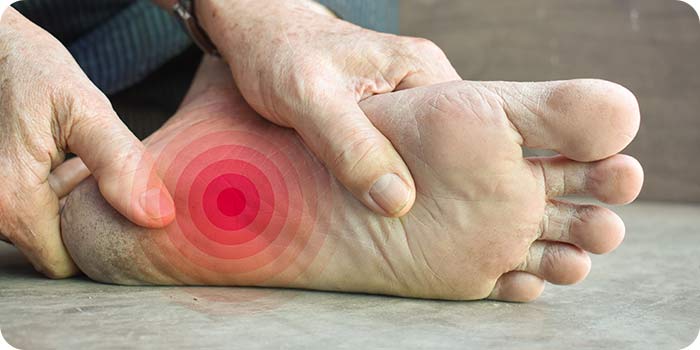Diabetic peripheral neuropathy (DPN) is a prevalent complication among individuals with diabetes, characterized by damage to the peripheral nerves. This condition often manifests in conjunction with severe insulin resistance, exacerbating its impact and complicating management efforts.

The Interplay Between Insulin Resistance and Peripheral Neuropathy
Insulin resistance, a hallmark of type 2 diabetes, impairs the body’s ability to utilize insulin effectively, leading to elevated blood glucose levels. Chronic hyperglycemia contributes to nerve damage through several mechanisms:
- Metabolic Disturbances: Elevated glucose levels can lead to the formation of advanced glycation end products (AGEs), which disrupt normal nerve function.
- Oxidative Stress: Persistent high blood sugar induces oxidative stress, damaging nerve cells and impairing their function.
- Microvascular Complications: Hyperglycemia can cause damage to small blood vessels that supply nerves, leading to nerve ischemia and contributing to neuropathy.
Studies have indicated that insulin resistance itself may directly contribute to the development of peripheral neuropathy, independent of hyperglycemia. This suggests that insulin resistance might play a crucial role in the pathogenesis of neuropathy.
Clinical Manifestations of Diabetic Peripheral Neuropathy
DPN primarily affects the extremities, with symptoms often starting in the feet and progressing proximally. Common clinical manifestations include:
- Sensory Symptoms: Numbness, tingling, burning sensations, or sharp pains.
- Motor Symptoms: Muscle weakness, loss of coordination, and balance difficulties.
- Autonomic Symptoms: Changes in sweating patterns, gastrointestinal disturbances, and cardiovascular abnormalities.
These symptoms can significantly impair quality of life and increase the risk of foot ulcers and amputations due to unnoticed injuries.
Diagnostic Approaches
Early detection of DPN is vital for effective management. Diagnostic strategies encompass:
- Clinical Evaluation: Comprehensive assessment of symptoms and medical history.
- Neurological Examination: Tests to evaluate reflexes, muscle strength, and sensory responses.
- Electrodiagnostic Studies: Nerve conduction studies and electromyography to assess nerve function.
- Quantitative Sensory Testing: Assessment of sensory nerve function using controlled stimuli.
These diagnostic tools aid in confirming the presence of neuropathy and determining its severity.
Management Strategies
Addressing DPN in the context of severe insulin resistance requires a multifaceted approach:
- Glycemic Control: Maintaining blood glucose levels within target ranges to prevent further nerve damage.
- Lifestyle Modifications: Implementing a balanced diet and regular physical activity to enhance insulin sensitivity.
- Pharmacological Interventions: Utilizing medications to manage pain and improve nerve function.
- Foot Care: Regular inspection and care of the feet to prevent injuries and infections.
Emerging therapies targeting the underlying mechanisms of insulin resistance and neuropathy are under investigation, offering hope for more effective treatments in the future.